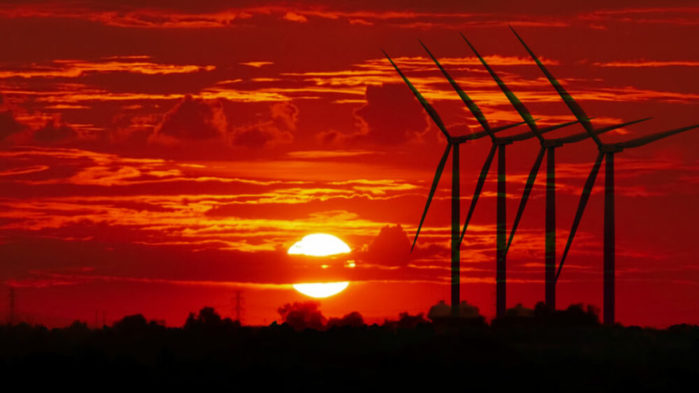

According to the latest figures from consultancy firm Fitch Solutions (Fitch Ratings), the global build-out of wind energy is set to jump by more than 90% in the decade 2017-2027, to reach an installed global capacity of 1 TW. The consultancy also forecasts that the current leader in wind power adoption, China, will account for nearly 45 percent of all new capacity additions in the same period (2017-2018).
According to the International Energy Agency (IEA), total renewable energy capacity is expected to grow to over 1 TW by 2023, experiencing a 46% growth over the next 5 years.
The report adds that it expects new capacity additions between 2017-2027 to be around 465 GW, which will result in the tally for global wind capacity to be around 980 GW. Even with the market expansion at such a rapid pace, wind power will still lose its share in the (non-hydro power) renewable energy mix. Slipping from 50% to 47%, as it will get caught out and then overtaken as the global solar power sector up-shifts to account for 45% of capacity, compared to 38% in 2017.
Read: Winds of Change and the heat from Solar
“We forecast solar power capacity growth to outpace that of wind power capacity – most notably due to the easy deployment of solar capacity in emerging markets,” said Fitch senior power and renewables analyst, Daniel Brenden. “This view is also informed by our expectation that markets such as India and China will add more solar than wind capacity over the next ten years, despite near-term challenges associated with equipment import tariffs in the former and subsidy cuts in the later. The 90%-expansion of wind power won’t alter the global generation mix much,” he added.
Propelled by the aforementioned 90 percent growth rate over the next 10 years, the share of wind power in the global power generation is only expected to increase from 4.8 percent in 2018 to a mere 6.5 percent in 2027.
Even after being caught out by solar capacity additions, wind energy will remain the dominant renewable power generation source globally. Maintaining its 51 percent share in the total renewable power generation. The Fitch report, expects wind to be “much more dominant” than solar due to relatively higher capacity factors. “This can be attributed to improving power generation efficiency in the sector, in large part attributed to the roll-out of offshore wind facilities that have access to higher wind speeds,” the report added.
Rounding out its forecast, the report lists the top ten fastest expanding markets over the coming decade. Following China is the U.S., Germany, India, the UK, France, Turkey, Mexico, Brazil and finally Australia. Asian countries secured three of the top ten slots on the list whereas, the European markets together represented the biggest share of capacity growth by region.
Read: How India can meet its Wind Energy targets. Will it move fast enough?
“Notably, our top ten will make up 85% of total global wind capacity additions over the coming decade, highlighting how a few big markets remain key to the sector’s growth trajectory.”
The curtain raiser for the 2nd edition of the India Bioenergy & Tech Expo (IBETE…
In light of the ongoing debate on whether flue gas desulphurisation (FGD) systems in coal-fired…
In a key step toward advancing clean energy adoption, Ahmedabad headquartered IRM Energy Ltd has…
Biofuels conglomerate Aemetis has announced that its subsidiary in India – Universal Biofuels – has…
The Greater Noida Industrial Development Authority (GNIDA) has commenced construction of a 300-tonne-per-day (TPD) bio-CNG…
The World Earth Day – with this year’s theme on ‘Our Power, Our Planet’ –…